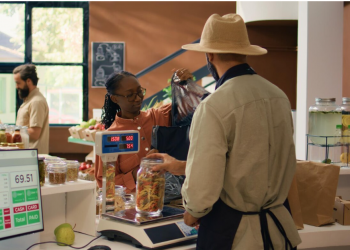Hiring your way out of a skills gap is getting harder—and pricier. The faster, more resilient strategy is to build a culture where learning is constant, practical, and measurable. The good news: you don’t need a seven-figure budget or a full-time L&D department to get there. With a lean playbook, managers can deliver visible capability lift in 90 days and create momentum that compounds across the year.
This guide walks through how to identify skills gaps, design microlearning and blended formats, use UAE-friendly weekend/evening cohorts, and track success with KPIs that leadership can trust.
Step 1: Identify skills gaps with evidence (not opinions)
Before you plan training, prove where performance is blocked. Use a light-touch discovery that fits into one week:
- Define the outcomes your team owns: e.g., cycle time for monthly reporting, customer response SLAs, conversion rates, defect rates, backlog days.
- Map tasks to skills: what skills materially drive those outcomes? (e.g., Excel/Power Query for automation, data storytelling for stakeholder influence, service workflows for CX speed).
- Collect proof: tiny time studies, error logs, customer feedback, sample outputs.
- Prioritize 2–3 critical gaps: pick the ones that (a) touch recurring work, (b) are teachable in weeks, and (c) have a clear “before/after” metric.
Tip: A single page summarizing “Outcome → Bottleneck → Skill → Metric” is enough to align leaders and avoid “training for training’s sake.”
Step 2: Microlearning + blended formats (the budget-friendly engine)
High-impact upskilling doesn’t need offsite bootcamps. It needs focused, just-in-time practice on real work.
- Microlearning blocks (15–30 min):short lessons on one skill (e.g., text cleanup in Power Query; storytelling with a one-slide narrative). These are easy to slot between meetings and reduce cognitive overload.
- Blended learning: mix self-paced microlearning with live application labs where learners bring real data, dashboards, or customer scenarios.
- Job aids & templates: checklists, SOP snippets, M code snippets, and slide templates translate new skills into repeatable behavior.
- Peer demos: five-minute “show-and-tell” at the end of the week—everyone demos a small win. This normalizes learning and spreads ideas.
Why it works: repetition + immediate application. Learners practice the skill on their own data, get feedback quickly, and keep outputs they can reuse.
Step 3: Weekend/evening cohorts in the UAE—momentum without disruption
Managers often worry that training steals prime working hours. An easy fix is time-boxed cohorts outside the 9–5, which suit regional schedules and respect customer commitments:
- Evening cadence: two 90-minute sessions per week (e.g., Tue/Thu 7:00–8:30 p.m.) for knowledge + hands-on practice.
- Weekend intensives: a 3–4 hour Saturday session to consolidate the week, finalize labs, and capture “wins of the week.”
- Cohort size: 8–12 learners is the sweet spot—enough diversity of examples, still intimate for coaching.
- Role tracks: split by outcome (e.g., “Ops Automation” vs. “Data Storytelling for Managers”) so content feels relevant on day one.
If your organization needs support, explore flexible learning options in the UAE —you can blend online, on-site, and hybrid formats without losing continuity.
Step 4: A crisp KPI framework (so leaders can see the ROI)
A learning culture sticks when leaders see numbers moving. Track a small, visible setof KPIs:
Adoption & activity
- % of learners completing weekly microlearning
- Error/defect rate change on targeted tasks
Business outcomes
- Hours saved per month on the targeted workflows
- Turnaround time (e.g., report delivery, ticket resolution)
- Satisfaction ratings (internal stakeholders or customers)
Set baselines in Week 0. Re-measure at Weeks 4, 8, and 12. Publish a one-page “Learning Impact Update” to keep momentum and funding.
A 90-day, manager-led plan (lean and realistic)
Weeks 0–1: Target & baseline
- Pick 2 outcomes to improve (e.g., month-end pack speed; customer ticket backlog).
- Identify 2–3 skills that unlock those outcomes.
- Baseline: cycle times, error rates, sample quality scores.
Weeks 2–5: Microlearning sprint
- Deliver two microlearning drops/week + one practice lab.
- Capture quick wins (e.g., a new Power Query that cuts a report from 90 to 15 minutes).
- Publish a weekly wins roundup to leadership.
Weeks 6–9: Deepen & standardize
- Turn ad-hoc wins into templates/SOPs: store in a shared repository.
- Run peer demos; pair learners for “buddy reviews” of real outputs.
- Start a small “automation backlog” of next candidates.
Weeks 10–12: Measure & scale
- Re-measure KPIs; calculate hours saved and quality improvements.
- Codify a sustainment plan (owners, cadence, repository, refresher sessions).
- Pitch next quarter’s cohort and focus area.
Budget levers that actually move the needle
- Co-create with managers: tie activities to real deliverables (not generic case studies).
- Reuse internal data & systems:“learning in the workflow” avoids expensive sandbox builds.
- Rotate internal champions: one or two practitioners per team coach the labs; external trainers focus on frameworks and best practice.
- Templates over slide decks: every session should produce an asset—query, template, checklist—that the team can reuse tomorrow.
Pitfalls (and how to dodge them)
- Too many goals at once. Start with two business outcomes. Add more only after a measurable win.
- No baseline. If you don’t measure Week 0, you can’t prove progress; people will forget the before state.
- Content that isn’t “their job.”Customize examples to the team’s actual data and documents.
- One-and-done workshops. Without follow-up labs and templates, gains decay. Schedule touchpoints for at least 8–12 weeks.
Simple artifacts that anchor a learning culture
- Skills → Outcomes Map (1 page): shows how each skill improves a KPI.
- Runbooks (1–2 pages): inputs, steps, owner, refresh frequency.
- Template gallery (shared drive): queries, SOPs, slide/storytelling templates.
- Wins wall (internal post or channel): screenshots and 2-line summaries of saved hours or quality jumps.
These artifacts make progress visible and train new joiners automatically.
What “good” looks like by Day 90
- At least two recurring processesautomated or templated, with documented steps.
- A 10–30% reduction in cycle time on targeted outcomes (conservative, but meaningful).
- A small bench of peer coaches who can run labs without external help.
- Leadership sees a monthly one-pager with hours saved and quality improvements.
- Learners can point to portfolio pieces (templates, dashboards, SOPs) that they created and now maintain.
If you want proof points and confidence boosters for stakeholders, you can also see learner outcomes and reviews
Bottom line
A learning culture isn’t a slogan—it’s a system. Identify the skills that change outcomes, deliver them through microlearning and blended labs, schedule UAE-friendly cohorts to protect the workday, and track a short, sharp KPI set. Do that for 90 days, and you’ll see a measurable shift in capability—without breaking the budget.








